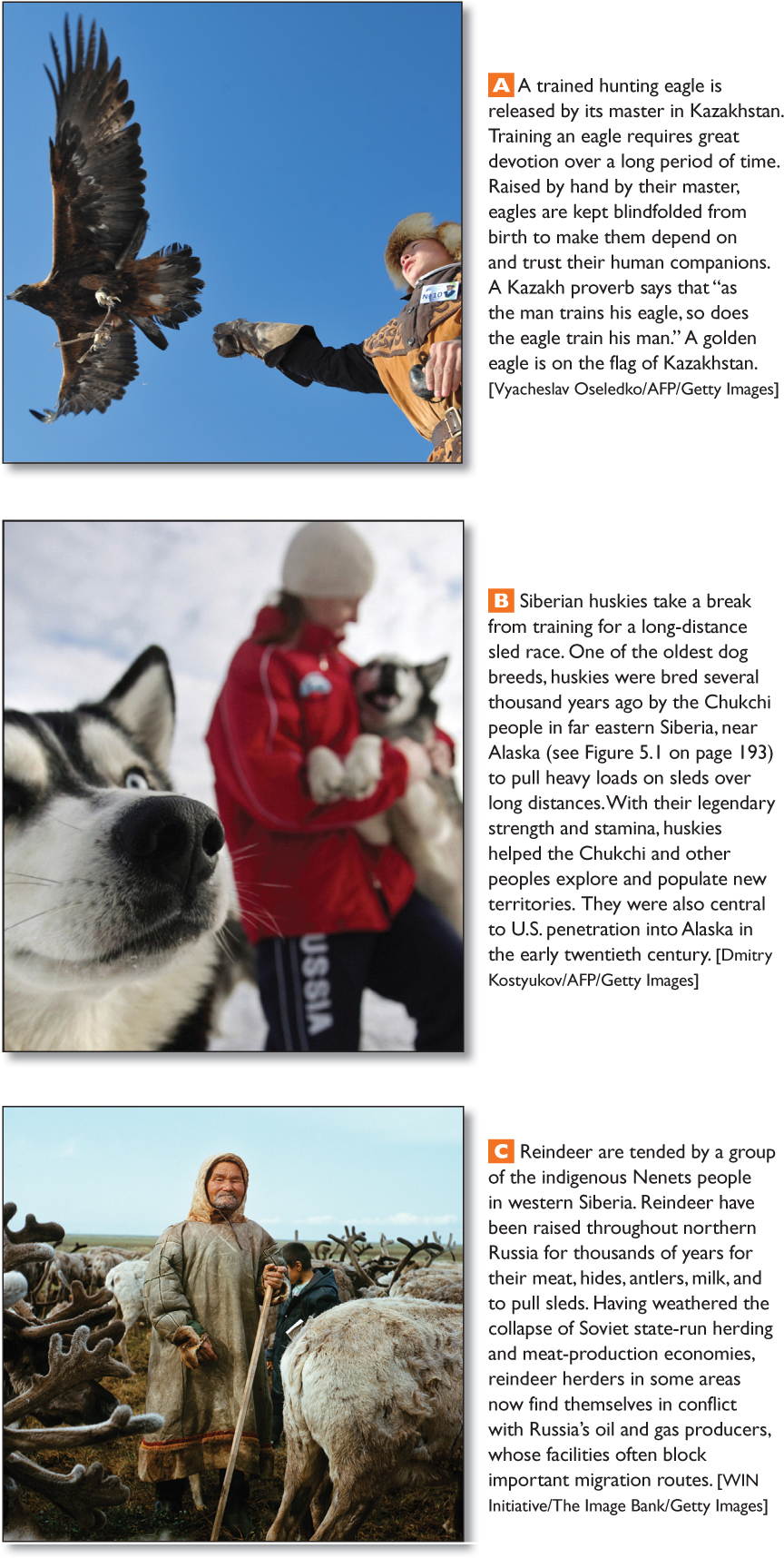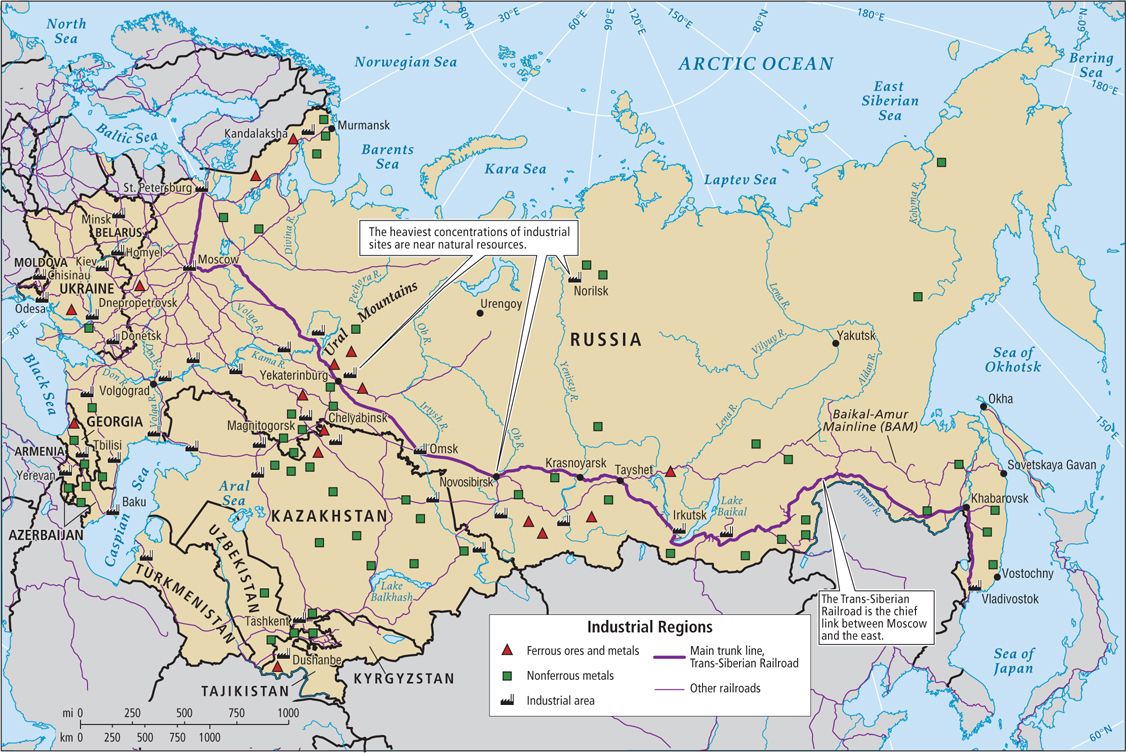5.7 URBANIZATION
GEOGRAPHIC INSIGHT 4
Urbanization: A few large cities in Russia and Central Asia are growing fast, fueled by the expansion of energy exports. Elsewhere, many cities are suffering from a lack of investment and maintenance as their economies struggle in the post-
Even though Russia and the post-
Russia’s capital city of Moscow, with 11.5 million people, is a primate city, as are all other capital cities of the nations in this region. The dominance of primate cities reflects the importance of politics and government in determining where economic development would happen during the Soviet and post-
Urban life for most remains shaped by the Communist-
In Moscow, housing shortages are irregular but particularly severe because the city has grown so rapidly since 1991, when it began receiving much of the new investment in the region. Due to high demand, the cost of housing has increased so dramatically that Moscow has one of the highest costs of living in the world. Shortages are also exacerbated by the ability of wealthy people to buy up multiple apartments and refurbish them into one luxurious dwelling.
Outside of Moscow, St. Petersburg, and a few other cities that have been growing because they are receiving revenues from energy exports (Figure 5.18C), many urban areas are suffering from general deterioration and the absence of funds for maintenance due to slow or absent economic growth. In some cases, this is causing overall housing shortages (see Figure 5.18B).

THINKING GEOGRAPHICALLY
Use the Photo Essay above to answer these questions.
Question 5.16
A Why is Moscow growing so rapidly?
Question 5.17
B What larger-
Question 5.18
C What is responsible for the growth of Astana?
Urban Legacies of Soviet Regional Economic Development One of the more difficult legacies of the Soviet era involves the huge industrial cities in the lightly inhabited expanses of Siberia and the Pacific coast. Founded originally as trading posts and fortress towns during the pre-

Because the region’s rivers run mainly north–

Urban Central Asia While Central Asia has historically had a relatively low rate of urbanization, recent expansion in the energy industries has fueled new urban growth. Cities here have also grown because of the region’s relatively high overall population growth. Tashkent, the capital of Uzbekistan, has 2.3 million people, making it the fourth-
VIGNETTE
Yernar Zharkeshov is a 24-
The idea of Astana came from Nursultan Nazarbayev, who has been president of Kazakhstan since its independence from the Soviet Union in 1991. Without much public debate, he moved the capital from Almaty in the south to the remote and sparsely populated steppe in the north that is known for its harsh climate. Here he realized his vision for a grand and impressive new capital, built more or less from scratch. Astana is meant to symbolize a new, forward-
Like many other migrants to Astana, Yernar Zharkeshov is an ethnic Kazakh. President Nazarbayev’s unspoken motive for moving the capital is to consolidate the country’s northern territories, which are currently dominated by ethnic Russians. The presence of these Russians is the result of the practice of Russification during the days of the Soviet Union. Astana has been designed to promote the opposite—
THINGS TO REMEMBER
GEOGRAPHIC INSIGHT 4
Urbanization A few large cities in Russia and Central Asia are growing fast, fueled by the expansion of energy exports. Elsewhere, many cities are suffering from a lack of investment and maintenance as their economies struggle in the post-
Soviet era. Russia’s capital city of Moscow, with 11.5 million people, is a primate city, as are all other capital cities of the nations in the region.
Urban life for most remains shaped by the Communist-
era legacies of central planning. Giant apartment blocks, designed by bureaucrats and built for industrial workers, dominate most cities, especially on the fringes of the older, pre- Soviet urban cores. One of the more difficult legacies of the Soviet era involves the huge industrial cities in the lightly inhabited expanses of Siberia and the Pacific coast, where urban growth has long been hampered by spatial isolation from the main population centers of the region.
While Central Asia has historically had a relatively low rate of urbanization, recent expansion in the energy industries has fueled new urban growth.